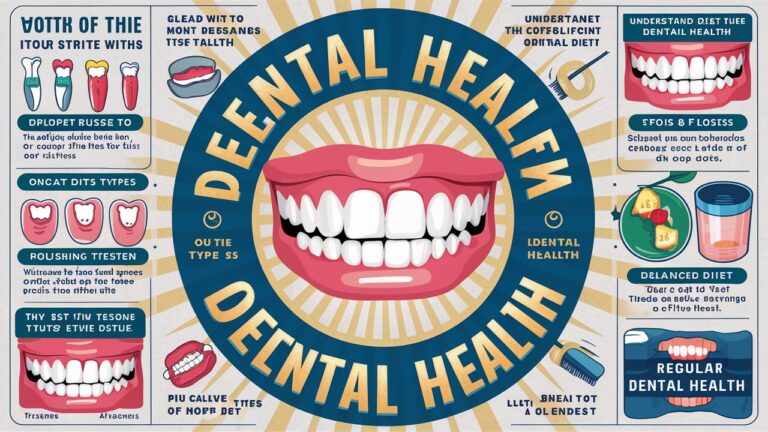Introduction to Dental Health
Dental health is a cornerstone of overall well-being, yet it’s often overlooked until problems arise. A healthy smile not only boosts confidence but also prevents systemic health issues like heart disease, diabetes, and infections. This comprehensive guide explores essential aspects of dental care, from preventive practices to advanced treatments, ensuring you have the knowledge to prioritize your oral hygiene. We’ll delve into common dental procedures, debunk myths, and answer frequently asked questions to empower you with actionable insights. Whether you’re seeking to improve your daily routine or understand complex treatments, this article is your roadmap to lifelong dental wellness.
1. The Importance of Regular Dental Check-Ups
Regular dental check-ups are the foundation of preventive care. During these visits, dentists perform professional cleanings to remove plaque and tartar buildup, which are primary culprits of cavities and gum disease. Examinations also screen for early signs of oral cancer, misalignment, and enamel erosion. Many systemic conditions, such as diabetes and vitamin deficiencies, manifest symptoms in the mouth, making these appointments critical for holistic health. Experts recommend biannual visits, but those with specific conditions (e.g., periodontal disease) may need more frequent care. Skipping check-ups risks undetected issues escalating into painful, costly procedures later.
2. Common Dental Procedures Explained
Modern dentistry offers solutions for nearly every oral health concern. Fillings repair cavities caused by decay, using materials like composite resin or amalgam. Root canals save infected teeth by removing damaged pulp and sealing the canal. Dental crowns restore broken or weakened teeth, while bridges and implants replace missing ones. Orthodontic treatments, such as braces or clear aligners, correct misalignment to improve function and aesthetics. For gum disease, scaling and root planing remove bacteria beneath the gumline. Understanding these procedures demystifies treatment plans and helps patients make informed decisions.
3. Preventive Care: Daily Habits for Optimal Oral Health
Prevention begins at home with consistent brushing, flossing, and mouthwash use. Brush twice daily with fluoride toothpaste, angling bristles at 45 degrees to clean gums and teeth. Electric toothbrushes enhance plaque removal for many. Flossing daily dislodges food particles and reduces interdental plaque, a key cause of gingivitis. A balanced diet low in sugar and acidic foods protects enamel, while calcium-rich foods strengthen teeth. Avoid smoking and excessive alcohol, which stain teeth and elevate oral cancer risks. For children, dental sealants provide an extra layer of cavity protection.
4. The Role of Orthodontics in Dental Health
Orthodontics isn’t just about aesthetics—it addresses functional issues like bite misalignment (overbite, underbite) and crowding, which can cause jaw pain, speech difficulties, and uneven wear. Traditional braces use brackets and wires to gradually shift teeth, while clear aligners offer discreet alternatives. Early intervention in childhood (ages 7–9) can guide jaw development, reducing the need for extensive treatment later. Adults increasingly opt for orthodontics to correct lifelong issues, proving it’s never too late to invest in a healthier smile.
5. Cosmetic Dentistry: Enhancing Your Smile
Cosmetic dentistry focuses on improving appearance, though many procedures also enhance function. Teeth whitening removes stains from coffee, wine, or aging, with in-office treatments offering faster results than at-home kits. Veneers mask chips, gaps, or discoloration with custom porcelain shells. Bonding repairs minor imperfections using tooth-colored resin. Even non-invasive options like gum contouring can balance gummy smiles. While cosmetic treatments aren’t medically necessary, they significantly boost self-esteem and social confidence.

6. Addressing Dental Anxiety: Tips for a Stress-Free Visit
Dental anxiety affects millions, often delaying critical care. Communicate fears with your dentist—many offices offer sedation options (nitrous oxide, oral sedatives) or calming amenities like music and aromatherapy. Gradual exposure, such as scheduling non-invasive cleanings first, builds trust. Cognitive-behavioral techniques and mindfulness exercises also reduce panic. Pediatric dentists specialize in child-friendly environments to foster positive early experiences. Remember, avoiding care worsens problems; modern dentistry prioritizes patient comfort and pain management.
Conclusion: Commit to Lifelong Dental Wellness
Your dental health journey is a lifelong commitment that pays dividends in confidence, comfort, and overall health. By embracing preventive care, staying informed about treatments, and addressing issues early, you can avoid complications and enjoy a radiant smile. Regular consultations with your dentist ensure personalized advice tailored to your unique needs. Remember, every small habit—from flossing to hydration—contributes to lasting oral wellness.
Frequently Asked Questions (FAQs)
Q1: How often should I replace my toothbrush?
Replace your toothbrush every 3–4 months or when bristles fray. A worn brush fails to clean effectively, increasing plaque buildup.
Q2: Are electric toothbrushes better than manual ones?
Studies show electric toothbrushes reduce plaque and gingivitis more effectively, especially for those with limited dexterity. However, proper technique matters most.
Q3: Is flossing really necessary?
Yes! Flossing removes 40% of plaque that brushing misses. Skipping it raises risks of cavities and gum disease between teeth.
Q4: Can whitening damage enamel?
Professional whitening is safe when done correctly. Overusing DIY kits can erode enamel, so follow dentist recommendations.
Q5: What’s the best way to handle a dental emergency?
For knocked-out teeth, keep the tooth moist (in milk or saliva) and see a dentist within an hour. For severe pain or swelling, seek immediate care.
Q6: Are dental implants worth the cost?
Implants offer a permanent, natural-looking solution for missing teeth, preventing bone loss and preserving facial structure. Many consider them a worthwhile investment.
Empower yourself with knowledge and proactive care—your smile deserves it!
